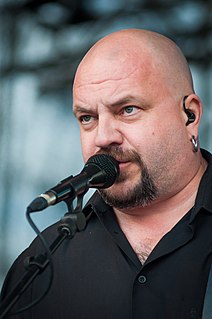
Timo Aulis Rautiainen is a Finnish heavy metal singer, guitarist and songwriter. He is best known as the singer and songwriter of Timo Rautiainen & Trio Niskalaukaus. He has also sung and played guitar in the bands Lyijykomppania and Aku Ankkuli.
Karita Marjatta Mattila is a Finnish operatic soprano.

Aulis Sallinen is a Finnish contemporary classical music composer. His music has been variously described as "remorselessly harsh", a "beautifully crafted amalgam of several 20th-century styles", and "neo-romantic". Sallinen studied at the Sibelius Academy, where his teachers included Joonas Kokkonen. He has had works commissioned by the Kronos Quartet, and has also written seven operas, eight symphonies, concertos for violin, cello, flute, horn, and English horn, as well as several chamber works. He won the Nordic Council Music Prize in 1978 for his opera Ratsumies.
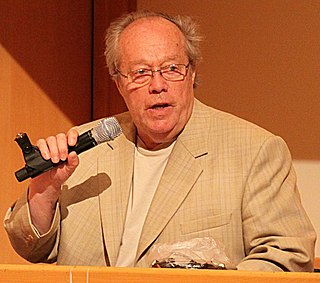
Jorma Juhani Panula is a Finnish conductor, composer, and teacher of conducting. He has mentored many Finnish conductors, such as Esa-Pekka Salonen, Mikko Franck, Sakari Oramo, Jukka-Pekka Saraste, and Osmo Vänskä.
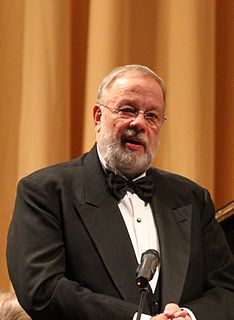
Matti Kalervo Salminen is a Finnish operatic bass, now semi-retired, who has sung at the most important opera houses of the world, including the Metropolitan and Bayreuth Festival. He is distinguished by an imposing figure and height, a cavernous, heavy, dark voice with an expansive upper register, and an expressive face. According to one reviewer, in his prime Salminen was "... simply the largest bass voice in captivity. It is not just its roar in powering over Wagner's maximum orchestra, but the way he carves the sonority and forms the color."

Ilmari Kianto, also known as Ilmari Calamnius and Ilmari Iki-Kianto, was a Finnish author. He was born in Pulkkila, Northern Ostrobothnia, and is best known for his books Punainen viiva and Ryysyrannan Jooseppi. In his books, he describes people and living at Suomussalmi municipality in Kainuu region. He died in Helsinki, aged 95. Composer Jean Sibelius used Kianto's poem 'Lastu lainehilla' (Driftwood) as the lyric for the last of his Seven Songs, Op.17 (1902).

Okko Tapani Kamu is a Finnish orchestral conductor and violinist.
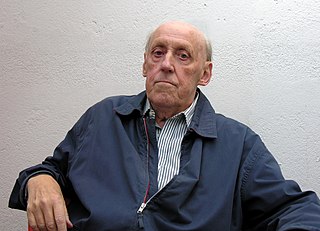
Baron Bo Gustaf Bertelsson Carpelan was a Finnish poet and author. He published his first book of poems in 1946, and received his Ph.D. in 1960. Carpelan, who wrote in Swedish, composed numerous books of verse, as well as several novels and short stories.

Jorma Kalervo Hynninen is a Finnish baritone who performs regularly with the world's major opera companies. He has also worked in opera administration.

The Horseman is an opera in three acts by Aulis Sallinen, based on a libretto by Paavo Haavikko. It was premiered by the Savonlinna Opera Festival on 17 June 1975 to celebrate the 500th anniversary of the Olavinlinna Castle, and is the first of Sallinen's operas, and is replete with heavy symbolism and historical allegories. According to George Loomis, writing in The New York Times, the work "is widely credited for helping to precipitate a wave of Finnish operas".

Kuningas Lear is an opera in two acts by Aulis Sallinen, with a libretto by the composer, based on the play by William Shakespeare and premiered in 2000; it was Sallinen's sixth opera.
Punainen viiva can refer to:
Martti Wallén is a Finnish operatic bass singer. Born in Helsinki, he sang both internationally and in his native country where he was a visiting soloist at the Finnish National Opera for many years. He created the role of the Judge in the world premiere of Aulis Sallinen's The Horseman in 1975.

Palatsi is an opera in three acts, Op. 68, composed by Aulis Sallinen, on a libretto by Irene Dische and Hans Magnus Enzensberger. The translation of the libretto into Finnish was by the composer.
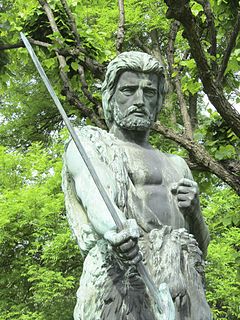
Kullervo is an opera in two acts, Op. 61, composed by Aulis Sallinen to his own libretto based on the story of Kullervo in the Finnish epic Kalevala. The opera premiered on 25 February 1992 at the Los Angeles Music Center.
The Finnish composer Aulis Sallinen has composed eight symphonies, considered by some to be the core of his instrumental output.
The Symphony No. 5, Washington Mosaics, Op. 57, is an orchestral composition by the Finnish composer Aulis Sallinen, who wrote the piece from 1984–85, revising the finale in 1987. The National Symphony Orchestra, the commissioning institution, premiered the work in 10 October 1985 at the Kennedy Center in Washington, D.C., under the direction of its music director, Mstislav Rostropovich.
Shadows, Op. 52, is an orchestral prelude by the Finnish composer Aulis Sallinen, who wrote the piece in 1982 on commission from the National Symphony Orchestra Association. The prelude's thematic material is closely related to Act III of Sallinen's third opera, The King Goes Forth to France, on which he also was at work in 1982, writing Shadows upon completion of Act II of the opera. Nevertheless, the composer has emphasized that Shadows is "an entirely independent orchestral work", albeit one whose "lyrical and dramatic ingredients reflect the philosophy of the opera". The National Symphony Orchestra (NSO) premiered the work on 30 November 1982 at the Kennedy Center in Washington, D.C., under the direction of its music director, Mstislav Rostropovich. Shadows so impressed Rostropovich and his orchestra that the NSO requested Sallinen compose a symphony for them, the result of which would be the Fifth (1985).









